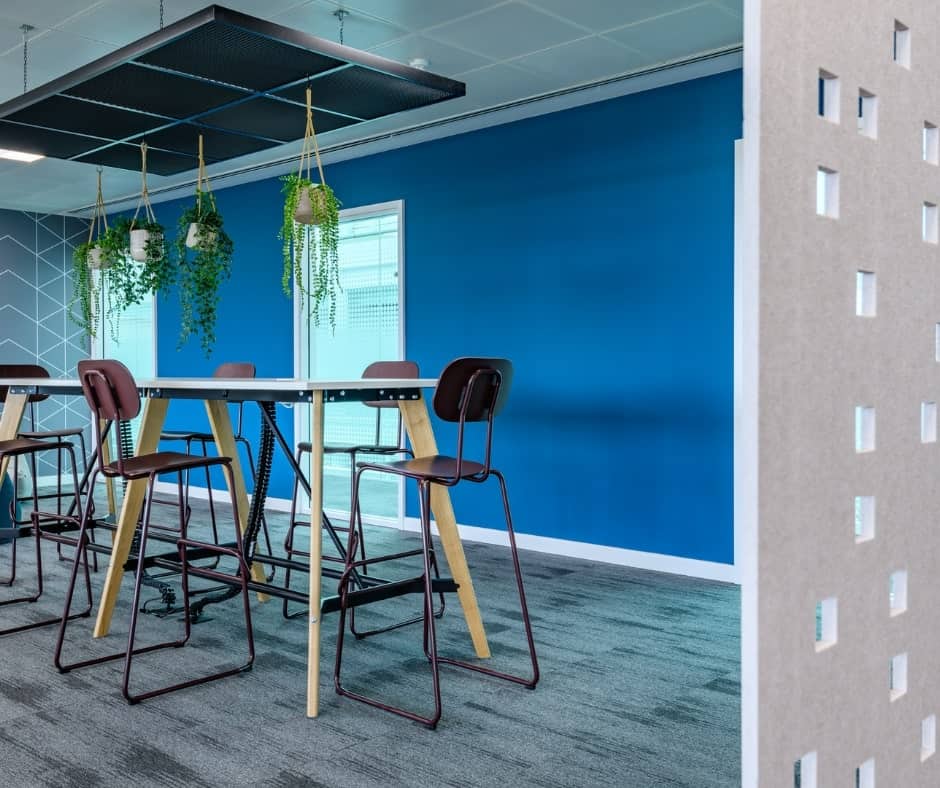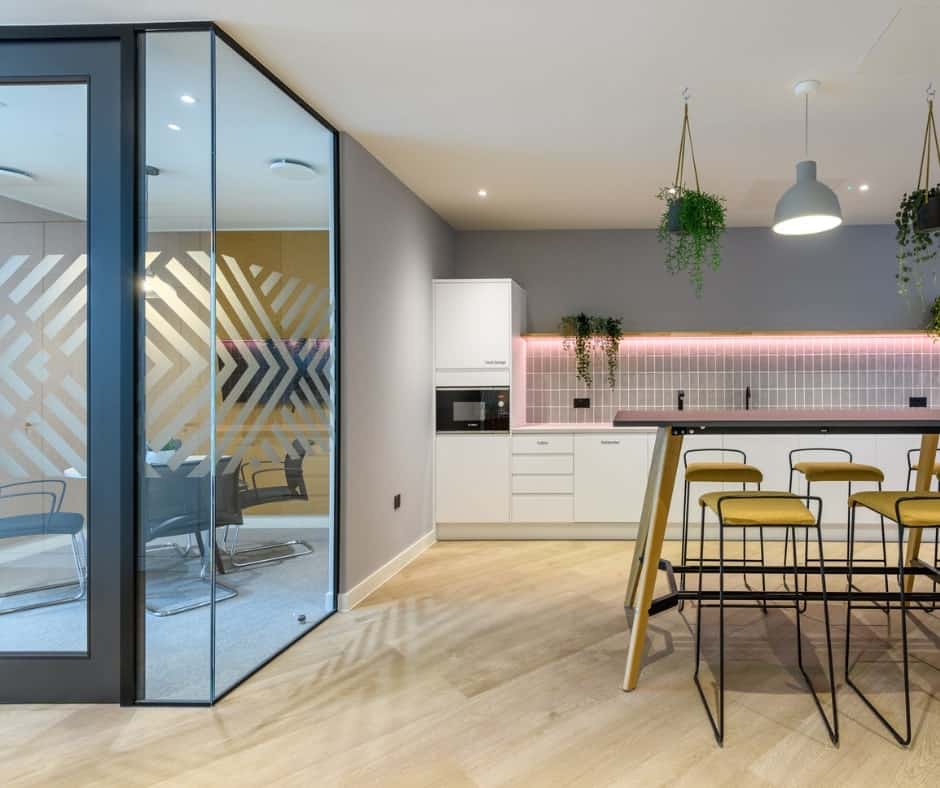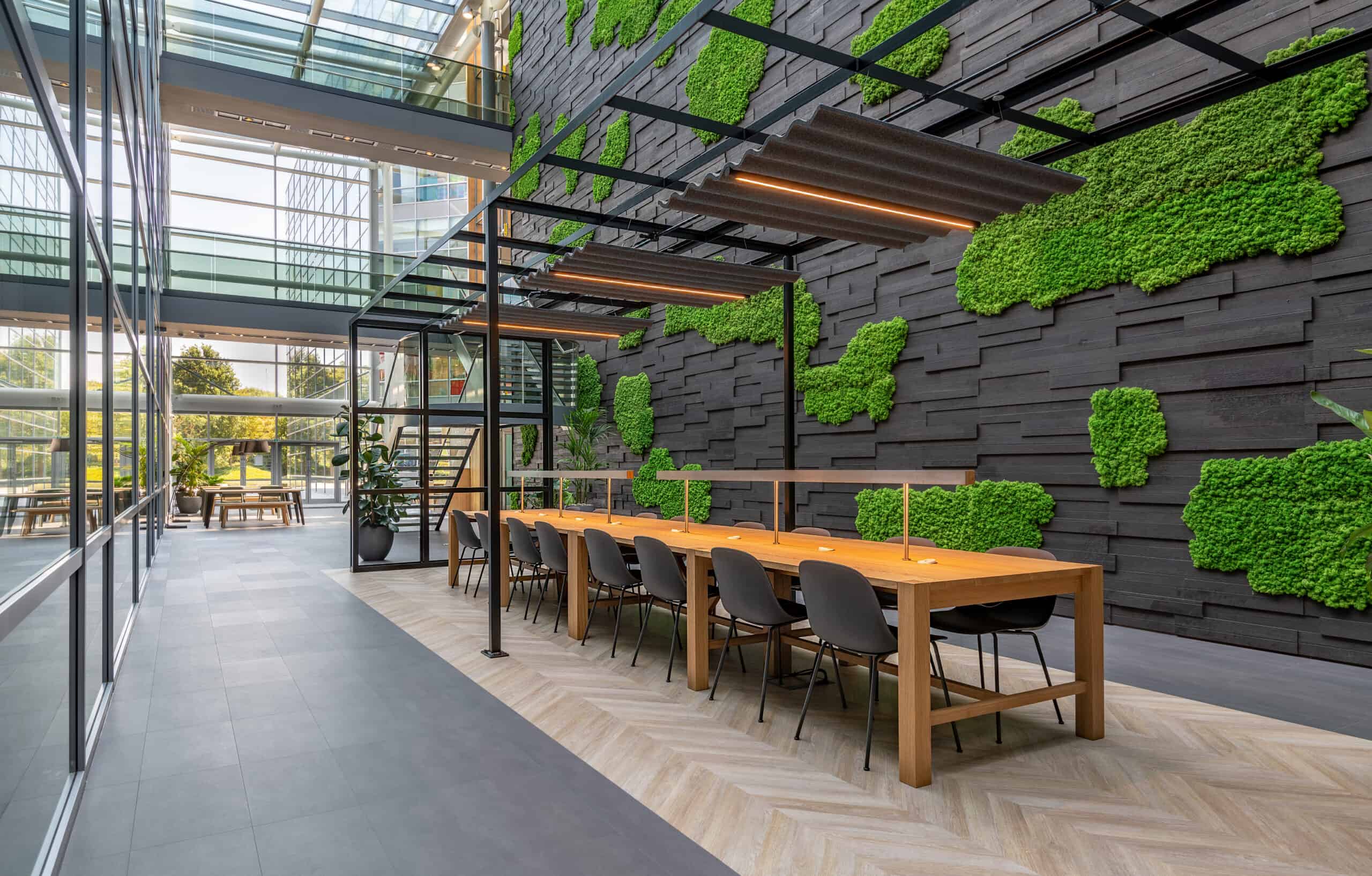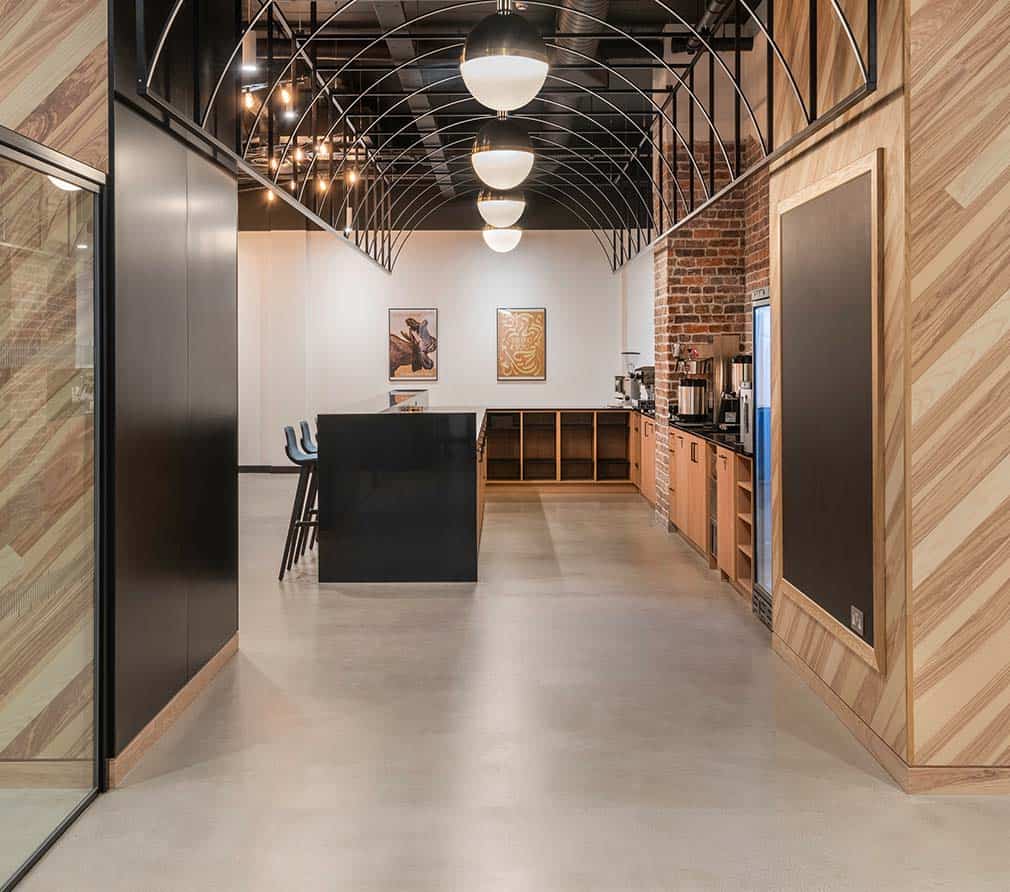New year, new office?
Post-pandemic we’ve seen the way we think about the office – and how those spaces are used – shift and evolve in line with the wider changes wrought on the world of work. That means there’s no better time than the start of this new year to rethink your design and create a space that truly works for your business.
Great design has the power to transform productivity levels, shape culture, enhance wellbeing and assist with staff retention – all key concepts that make a direct contribution to your overall success, no matter your sector.
To help you get it right, we’re sharing our top 10 office design tips for 2024 right here. Let’s dive in.
1. Take a cue from the hospitality sector
Two-thirds of business leaders believe that we’ll see a full-time return to the office for all staff by 2026. Ensure that those heading back feel welcome by taking a cue from the hospitality sector. Café-style reception areas with warm lighting, comfortable seating, plants, and a drinks station nurture a sense of the familiar.
Emulating a favourite high street coffee spot, this type of space is a very effective way to invite staff and visitors into the building and encourages them to feel comfortable. It also offers a space for social events, can function as a team lunch spot, informal meeting destination and relaxation spot.
Offering a variety of drinks and snacks such as fresh fruit, pastries and sandwiches can also help to communicate value to team members, which translates to happier, more productive, and more aligned teammates.
2. Ensure there’s enough desk space for the whole team
With many CEOs keen to have their whole teams back in the office full-time, you may need to rethink the seating arrangements. When considering a new office design, it’s vital to ensure there’s enough desk space for the whole team to work comfortably – in a way that suits their style of working.
If you switched to a hybrid or flexible model post-pandemic but more people are now migrating back to the office, you may need to think creatively about where everyone will sit. Communal workspaces work well for shared projects and collaboration, but there are times when focused personal space is also called for. You will likely need a mix of workstations to ensure that when the whole team is in the office, everyone has a space to work in a way that works for the task at hand.
3. Don’t underestimate the importance of biophilic design
Biophilic design is the practice of bringing the natural world into the built environment and it’s one of the biggest trends shaping office design today.
Considering how you can incorporate natural materials, textures and patterns within the office environment creates spaces which are inherently calm and restful and promote wellness. Incorporating plants and living walls promotes better air quality for example, while also absorbing excess sound. Likewise, the use of natural materials eliminates some toxins and chemicals. These considerations combined can help to create a healthier space for all office users and boost physical and mental wellness.
4. Prioritise natural ventilation
2023 was the warmest year on record. Climate scientists have warned that 2024 is very likely to continue that pattern, with a 99% chance that it too will be one of the top 5 hottest years ever experienced on earth. With our summers only set to become more ferocious, smart planning now could help your office space be more comfortable when the full force of summer hits later.
Prioritising natural ventilation during the design process is a win-win. Not only does it help to cool the space and therefore create a healthier, more productive environment for business, it also reduces the need for costly energy-powered cooling.
5. Think carefully about lighting
Lighting plays a fundamental role in how well (or not) your office works and functions. It’s especially key to wellbeing, as too little or too much light can trigger migraines and eye strain.
When thinking about lighting, there’s no one-size fits all approach. Different areas of the office will require different styles of light so you’ll need to give careful thought to designing a well-lit office that strikes the right balance of functional and aesthetically pleasing.
While always working to maximise the use of natural light, you’ll also need to decide on where and how task, ambient and accent lighting will feature in your new look workspace.
Don’t forget that the more sustainable and eco-friendlier your lighting design, the more beneficial it will be for your team and your running costs.
6. Embrace the use of sustainable, recycled and upcycled materials
Material design is going through an incredibly exciting phase right now, with many manufacturers making great leaps forward in sustainable material production.
Incorporating more sustainable materials into your design isn’t just a smart environmental move. Research conducted by IBM indicates that around 70% of employees and candidates find businesses than take sustainability seriously more appealing.
It’s easier than you think to use sustainable materials in your office design. Bamboo for example can be used to create internal walls or be easily incorporated into furniture. A growing number of furniture designers are also turning to upcycling to give a new lease of life to unwanted items.
7. Use smart technologies
Smart technologies aren’t just the latest buzzword to build into your office space – they can also make your workplace more efficient, more productive, more collaborative, reduce its reliance on paper, and help it to be more eco-friendly.
Smart lighting can take over the onerous task of making sure lighting is set to just the right level, for example. This can help to boost productivity and has clear wellness benefits. But smart lighting can also reduce energy wastage by dimming or turning off lights where no motion is detected. Similar systems can automate your HVAC control, allowing for energy saving gains to be made and for your office to operate more economically.
Other smart technologies, such as video conferencing, automated check-in, and gamification tools for training and development can save time, boost productivity, aid in collaboration, and facilitate a positive workplace culture.
8. Make use of unexpected and unused spaces
Chances are you aren’t making use of your entire office as well as you could.
Whether you feel tight on space or just want to use your building in a smarter way, seeking out unused, underused, and unexpected spaces and putting them to work in new ways can be a real game-changer for your office design.
It can also provide vital space for design features that you may not otherwise have room for. Wider corridors for example, could easily be pressed into service as relaxation spaces by adding in comfortable seating and plants. Private office space that seldom gets used could be transformed into a group meeting space or a wellness room simply by adopting a creative mindset.
9. Use modular design elements
We know the world of work is changing, with many organisations juggling hybrid, remote and full-time office-based staff. As people change how they work and where they work, module design elements (such as modular furniture, walls, or even entire rooms) can give your office the flexibility it needs to remain agile and functional.
10. Consider your use of colour
How you use colour can shape how office users feel when in the space, and how they perform their roles. There’s an abundance of research dedicated to colour psychology, but it’s widely understood that colour can influence mindset, mood and even productivity levels. While your brand may dictate your colour palette to some extent, consider where other hues can be used to harness the full spectrum of beneficial properties.








